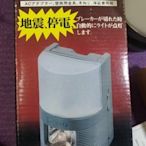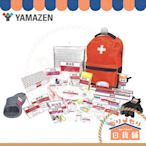搜尋結果
 $775日本 Calorie Mate 能量營養口糧 防災備品 長效期保存 救命存糧 登山露營 野外 地震包JP Plus+滿千免運可刷卡
$775日本 Calorie Mate 能量營養口糧 防災備品 長效期保存 救命存糧 登山露營 野外 地震包JP Plus+滿千免運可刷卡 $1890日本 Onisi 尾西食品 5年長期保存 乾燥飯 即食飯 沖泡米飯 露營 料理包 地震 防災【全日空】全日空 日本代購
$1890日本 Onisi 尾西食品 5年長期保存 乾燥飯 即食飯 沖泡米飯 露營 料理包 地震 防災【全日空】全日空 日本代購 $3680B款式 4種20包 Satake 魔法米飯 5年保存 即食飯 沖泡米飯 露營 登山 救難 地震 防災食品 日本代購滿2件免運費 Luci日本代購
$3680B款式 4種20包 Satake 魔法米飯 5年保存 即食飯 沖泡米飯 露營 登山 救難 地震 防災食品 日本代購滿2件免運費 Luci日本代購 $399日本地震 停電自動亮燈 地震感知燈 可壁掛 地震包 緊急照明燈 可提 可掛墻壁賴00979237918
$399日本地震 停電自動亮燈 地震感知燈 可壁掛 地震包 緊急照明燈 可提 可掛墻壁賴00979237918![日本地震防災救生逃生包包家用戶外旅行救生救援套裝包 日本地震防災救生逃生包包家用戶外旅行救生救援套裝包]() $1101日本地震防災救生逃生包包家用戶外旅行救生救援套裝包Y2930072198
$1101日本地震防災救生逃生包包家用戶外旅行救生救援套裝包Y2930072198![日本小林製藥 小白兔24H手握式暖暖包(十片裝)【小三美日】寒流必備 地震 日本小林製藥 小白兔24H手握式暖暖包(十片裝)【小三美日】寒流必備 地震]() $139日本小林製藥 小白兔24H手握式暖暖包(十片裝)【小三美日】寒流必備 地震小三美日旗艦店
$139日本小林製藥 小白兔24H手握式暖暖包(十片裝)【小三美日】寒流必備 地震小三美日旗艦店![日本 山善 緊急避難包 避難防災包 YBG-30R 防震 安全 防災 專業地震包 防災用品 WE-50 CS-30 日本 山善 緊急避難包 避難防災包 YBG-30R 防震 安全 防災 專業地震包 防災用品 WE-50 CS-30]() $1400日本 山善 緊急避難包 避難防災包 YBG-30R 防震 安全 防災 專業地震包 防災用品 WE-50 CS-30小凌汽車用品
$1400日本 山善 緊急避難包 避難防災包 YBG-30R 防震 安全 防災 專業地震包 防災用品 WE-50 CS-30小凌汽車用品![日本 Tanita 求生哨計步器 可掛式 警示哨 防身 野外呼救地震哨 小朋友老人登山 地震 地震包❤JP 日本 Tanita 求生哨計步器 可掛式 警示哨 防身 野外呼救地震哨 小朋友老人登山 地震 地震包❤JP]() $599日本 Tanita 求生哨計步器 可掛式 警示哨 防身 野外呼救地震哨 小朋友老人登山 地震 地震包❤JPJP Plus+滿千免運可刷卡
$599日本 Tanita 求生哨計步器 可掛式 警示哨 防身 野外呼救地震哨 小朋友老人登山 地震 地震包❤JPJP Plus+滿千免運可刷卡![日本 HOT HOT PACK 蒸氣的力量 食物加熱包 罐頭 調理包 登山 露營 防災 地震包 ❤JP 日本 HOT HOT PACK 蒸氣的力量 食物加熱包 罐頭 調理包 登山 露營 防災 地震包 ❤JP]() $420日本 HOT HOT PACK 蒸氣的力量 食物加熱包 罐頭 調理包 登山 露營 防災 地震包 ❤JPJP Plus+滿千免運可刷卡
$420日本 HOT HOT PACK 蒸氣的力量 食物加熱包 罐頭 調理包 登山 露營 防災 地震包 ❤JPJP Plus+滿千免運可刷卡![日本 無印良品 專業版緊急救難包 無印 地震包 防災組 避難包 持有組合 防震 防災 救命 安全 露營 日本 無印良品 專業版緊急救難包 無印 地震包 防災組 避難包 持有組合 防震 防災 救命 安全 露營]() $1499日本 無印良品 專業版緊急救難包 無印 地震包 防災組 避難包 持有組合 防震 防災 救命 安全 露營任2件免運⚓️ 水貨碼頭
$1499日本 無印良品 專業版緊急救難包 無印 地震包 防災組 避難包 持有組合 防震 防災 救命 安全 露營任2件免運⚓️ 水貨碼頭![日本 KOKUBO 小久保工業所 急救毯 鋁箔製 保暖 防水防風 登山防災用品 地震包 避難包 ❤JP 日本 KOKUBO 小久保工業所 急救毯 鋁箔製 保暖 防水防風 登山防災用品 地震包 避難包 ❤JP]() $99日本 KOKUBO 小久保工業所 急救毯 鋁箔製 保暖 防水防風 登山防災用品 地震包 避難包 ❤JPJP Plus+滿千免運可刷卡
$99日本 KOKUBO 小久保工業所 急救毯 鋁箔製 保暖 防水防風 登山防災用品 地震包 避難包 ❤JPJP Plus+滿千免運可刷卡![日本 無印良品 專業版緊急救難包 無印 地震包 防災組 避難包 儲備組合 防震 防災 救命 安全 露營 日本 無印良品 專業版緊急救難包 無印 地震包 防災組 避難包 儲備組合 防震 防災 救命 安全 露營]() $2299日本 無印良品 專業版緊急救難包 無印 地震包 防災組 避難包 儲備組合 防震 防災 救命 安全 露營任2件免運⚓️ 水貨碼頭
$2299日本 無印良品 專業版緊急救難包 無印 地震包 防災組 避難包 儲備組合 防震 防災 救命 安全 露營任2件免運⚓️ 水貨碼頭
On 6 and 9 August 1945, the United States detonated two atomic bombs over the Japanese cities of Hiroshima and Nagasaki. The bombings killed between 129,000 and 226,000 people, most of whom were civilians, and remain the only use of nuclear weapons in an armed conflict. Japan surrendered to the Allies on 15 August, six days after the bombing of ...
- 6 and 9 August 1945
Viviparus georgianus, commonly known as the banded mystery snail, is a species of large freshwater snail in the family Viviparidae, the river snails. It is native to North America, generally found from the northeastern United States to Florida and the Gulf of Mexico, and thrives in eutrophic lentic environments such as lakes, ponds and some low ...
Excess steam from the drywell enters the wetwell water pool via downcomer pipes. SFP: spent fuel pool area SCSW: secondary concrete shield wall. The Fukushima nuclear accident was a major nuclear accident at the Fukushima Daiichi nuclear power plant in Ōkuma, Fukushima, Japan which began on March 11, 2011.
Japan is an island country in East Asia.It is in the northwest Pacific Ocean and is bordered on the west by the Sea of Japan, extending from the Sea of Okhotsk in the north toward the East China Sea, Philippine Sea, and Taiwan in the south. Japan is a part of the Ring of Fire, and spans an archipelago of 14,125 islands, with the four main islands being Hokkaido, Honshu (the "mainland ...
Current ISO 3166 country codes. The sortable table below contains the three sets of ISO 3166-1 country codes for each of its 249 countries, links to the ISO 3166-2 country subdivision codes, and the Internet country code top-level domains (ccTLD) which are based on the ISO 3166-1 alpha-2 standard with the few exceptions noted.
A convoy of fire engines in the tsunami zone. The aftermath of the 2011 Tōhoku earthquake and tsunami included both a humanitarian crisis and massive economic impacts. The tsunami created over 300,000 refugees in the Tōhoku region of Japan, and resulted in shortages of food, water, shelter, medicine and fuel for survivors. 15,900 deaths have ...
The Empire of Japan, [c] also referred to as the Japanese Empire, Imperial Japan, or simply Japan, was the Japanese nation-state [d] that existed from the Meiji Restoration in 1868 until the enactment of the reformed Constitution of Japan in 1947. [8] From 29 August 1910 to 2 September 1945, the Empire of Japan included the naichi ( present-day ...








